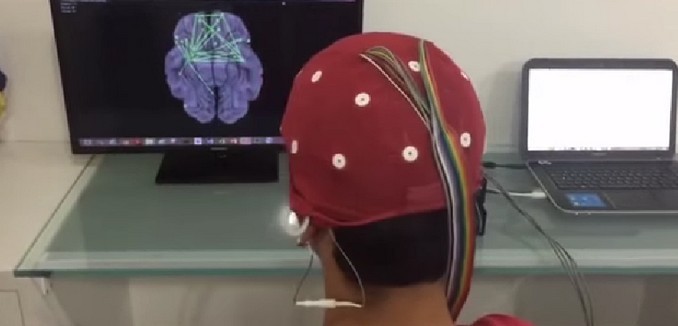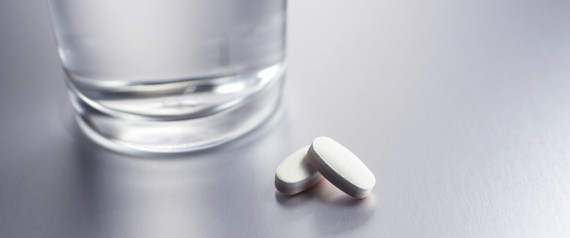While we hear a lot about how technology keeps people up at night, some technology, like the ones described below, are made to help you sleep.
Nothing throws off your day like a lack of sleep the night before. It ruins your concentration, makes you impatient, cause memory lapses and worse. Over the long term, sleep deprivation can lead to depression, diabetes, hypertension and obesity.
It can also be deadly. According to AAA, people who only sleep 6 to 7 hours per night are twice as likely to be involved in a car accident as those who sleep 8 hours or more. Sleep less than 5 hours per night and you are four or five times more likely to be in a car accident.
That's a bigger problem when the Centers for Disease Control reports that 30 percent of adults say they sleep an average of 6 hours, and up to 70 million Americans will have a sleep disorder at some point. Fortunately, technology can actually help sleep.
1. SLEEP-RECORDING GADGETS
There's been an explosion of gadgets that are designed to monitor your sleep and help you improve it. The market for these gadgets is headed for more than $125 million in 2017.
Sense, for example, is a little orb that sits in your room monitoring noise, light, temperature, humidity and air particles, and can wake you up at the ideal part of your sleep cycle. A tiny clip attached to your pillow tracks your movements. In the morning, it can tell you through an Apple app how much sleep you really got, and if something in your environment is disturbing your rest. It's currently available for pre-order on Kickstarter for $99 and will cost $129 when it ships in November.
Some similar monitors already available include Beddit ($149), which also tracks your heart rate and breathing, and SleepRate ($100), which has an app full of useful information plus a wearable heart rate sensor. Withings Aura ($300) is another upcoming gadget that not only monitors your sleep, but it cycles through light and sound programs to try and improve your sleep.
2. SLEEP-RECORDING APPS
You probably already have a sleep-improving gadget sitting next to you at night. I'm talking, of course, about your smartphone.
A sleep-recording app coupled with your smartphone's sensors can give you a good idea of your sleep patterns. You usually just have to put your phone on the bed near your pillow and let it do the rest.
Important warning: Never put your phone under your pillow or cover it with a blanket. The phone could overheat and catch on fire.
Some popular sleep-tracking apps are Sleep Better (Android, Apple; Free), SleepBot (Android, Apple, Free) and Sleep Cycle Alarm (Android, Apple; $1). They all track your movements during sleep.
Sleep Better includes a journal to keep track of sleep-affecting factors like diet, exercise and even your dreams. So it's good for tracking down lifestyle choices that may be hurting your sleep.
SleepBot tracks your sleep like the others, but also includes sound recording so you can detect problems like sleep apnea, or find out what nighttime sounds cause you to move around.
Sleep Cycle Alarm is the one to get if you generally sleep OK, but seem to always wake up at a bad time. It uses your movements to predict the perfect time for you to wake up, and includes plenty of restful alarms.
3. HIGH-TECH MATTRESSES
Soon, you might not need a stand-alone sleep-tracking gadget. Everything you need will be built right into your mattress, and that future is now if you're willing to pay for it.
I'm sure you've seen commercials for Sleep Number mattresses. These mattresses let you continually adjust how hard or soft the mattress is to get the perfect sleeping experience. They can even have dual zones so you and your significant other can each tailor the bed to your preference.
Now, Sleep Number offers SleepIQ. The mattress includes sensors that track your breathing rate, heart rate and movements. You can then pull up your sleep statistics on the companion app to see how long you slept and how well. There's also a journal function to keep track of your diet, exercise and more that could be impacting your sleep. For those with a partner in bed, SleepIQ can track their sleep as well and even figure out how your sleep patterns affect each other.
Naturally, any new mattress is going to be a serious financial commitment, and SleepIQ is no exception, starting at $999.98 for a queen mattress. While it might be worth the cost in the long run, you might be hesitant in the short run.
If that's the case, take a look at Luna. It's a mattress cover that adds SleepIQ-style sensors and tracking to any mattress. So it keeps tabs on your sleep cycle, heart rate and breathing rate over time so you know if your sleep is improving or not. However it has some other impressive features. For example, it includes temperature adjustment so you have just the right level of comfort for sleep. There are two zones, naturally, so you and your partner won't need to argue about how warm is too warm.
Because Luna tracks your sleep cycle, it can work with your alarm clock to wake you at the ideal moment in your sleep cycle; no more groggy mornings. It can even learn your habits, so it knows when you typically go to bed and starts adjusting the temperature in advance. You can control it remotely using your smartphone. Luna is available for pre-order right now starting at $235 and should be shipping in late Summer 2015.
BONUS TIP: THE PRACTICAL OPTION
While technology is rushing to cure sleep problems, one growing cause of poor sleep is technology itself. It's easy to get sucked in to Facebook, playing a hot new game, or binge-watching a show on Netflix instead of going to bed on time. Then there's that text from a friend that makes your phone light up right as you're dropping off to dreamland.
I know forcing yourself to turn off the gadgets, or silence your phone, is tough but it is worth it. There are some ways you can help yourself out if you're struggling. Go poking in your network router settings and you'll see that you can schedule it to cut off Internet access at night. The parental controls for most video game consoles include blackout times as well. For Android gadgets, an app like Tasker lets you program times and places to cut off communications.
Of course, even using technology near bedtime is still a problem. The blue light from most screens tricks your brain into thinking it is daytime even when it isn't. That's why many sleep experts recommend shutting down your gadgets at least two hours before bedtime.
If that isn't possible, a program like F.lux for computers and Apple gadgets, and Lux for Android, tints your screen red at night. That reassures your brain it's night time, and that means you'll fall asleep easier.
 New research indicates that poor sleep not only affects you the next day, but over a lifetime.
New research indicates that poor sleep not only affects you the next day, but over a lifetime.






